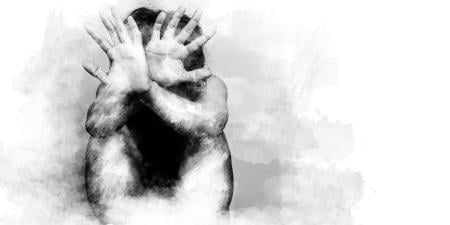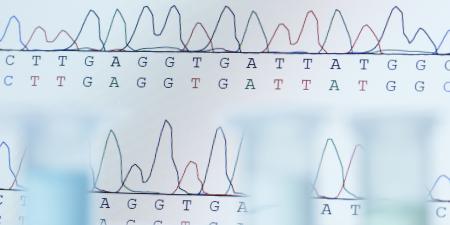Abstract
The historical relationship between health care professionals and people with disabilities is fraught, a fact all the more troubling in light of the distinctive roles clinicians play in both establishing and responding to that which is considered normal or abnormal by society at large. Those who wish to improve their clinical practice might struggle, however, to keep up with developments across numerous disability communities as well as the ever-growing body of disability studies scholarship. To assist with this goal, I offer an overview of recent disability theory, outline a set of responsibilities clinicians have to disability communities, and provide recommendations for clinicians who hope to justly treat patients with disabilities and improve their care and health outcomes.
Clinicians’ Power to Name Disabilities
While medical practice has always involved people with disabilities, it is only in recent decades that sustained disability activism, increased legal protections and social awareness, and new forms of communication have afforded various communities of people with disabilities larger platforms and increased political leverage to voice their experiences. Historically, these voices have by and large been silenced, a truth that sadly still reverberates today and one which requires significant effort to counter.1 Through the creation, maintenance, and revision of diagnostic categories, health care in general and the practice of physicians in particular play distinctive roles in both establishing and responding to that which is named a disability or as disabling. Clinician misunderstanding concerning the meaning of disability and the resultant miscommunication between clinicians and people with disabilities can lead not only to negative health outcomes but also to much larger social consequences, ranging from ill-conceived state and federal policies that result in systemic oppression to various forms of interpersonal discrimination and stigmatization.2
Clinicians also wield enormous power over the care and treatment of people with disabilities, a group every human will become part of over the life course. Those who wish to advance their knowledge and improve health outcomes would thus benefit from reflecting upon the meaning of disability and the moral obligations and responsibilities owed to communities of people with disabilities. Throughout, I will use the phrase disability communities to highlight the profound diversity of experiences of disability and also the way entire communities, cultures, histories, and political movements can form around certain types or sets of experiences of disability.
With this aim in mind, I first offer 3 central takeaways from the fields of disability studies and philosophy of disability. These takeaways demonstrate how mistaken assumptions about disability can lead to poor treatment and negative health outcomes. They show, in other words, that when used without care and caution, the power to name and respond to disability in clinical contexts can hurt people; it is a power used unethically if clinicians do not actively learn about disability communities and practice disability humility. Second, I formulate these responsibilities in terms of recommendations that clinicians can integrate into their practice across specialties.
Three Things Clinicians Should Know About Disability
Disability activists as well as scholars working in the academic fields of disability studies and philosophy of disability have produced a large body of research over the last 40 years. For shorthand, I refer to this body of knowledge as disability theory. There are 3 core insights from disability theory I highlight here: assumptions about quality of life, the problem of ableism, and the distinction between disability, disease, and illness.
Quality of life. Numerous studies demonstrate that able-bodied people assume the quality of life experienced by people with disabilities to be lower than they themselves report.3 Given that the vast majority of clinicians are able bodied, this means that many, if not most, clinicians mischaracterize the quality of life of people with disabilities.4 For example, a patient diagnosed with multiple sclerosis (MS) might be told by her primary practitioner or a specialist that she should expect significant loss, pain, and the dissolution of her current social supports. Of course there is truth to that claim, but it poisons the prognostic well by only focusing on the difficulty of ability transitions—which can indeed come with pain, suffering, and loss—and ignoring or downplaying the establishment of new and different abilities and ability expectations, which can result in new forms of flourishing and community.5
As philosopher S. Kay Toombs has argued—and as her life itself testifies, as a successful, tenured emeritus professor of philosophy at Baylor University who was diagnosed with multiple sclerosis (MS) at the age of 29—such catastrophizing and partial assessments do not reflect evidence based upon the reports of people living with conditions such as MS.6,7 They are, instead, empirically uninformed assumptions made by clinicians who have not studied social scientific evidence concerning the conditions in question that are then extrapolated to other forms of disability.
As disability activists and disability scholars have argued for decades, people with disabilities, on the whole, flourish in all sorts of bodies and in all sorts of ways.8 What many people with disabilities do report as diminishing quality of life is often less the direct effect of their physical or psychological impairments than the effects of living in a society that is designed for and supportive of abled-bodied people alone.9 From inaccessible buildings and modes of communication to pervasive employment discrimination—often despite the protections of the Americans with Disabilities Act (ADA) of 1990—modern societies have been built in ways that often systematically oppress, discriminate against, and stigmatize those who are not able bodied.10-12 There is a word for this: ableism.
The problem of ableism. Ableism refers to the assumption that the “normal” able body is better than abnormal bodily forms and to the social ramifications of that assumption. Ableism leads to a world where we actively shape bodies to be normal and shape our environments for those bodies alone. As this definition should make clear, ableism has unfortunately been a central and unquestioned part of medicine across its history. If the idea that “being normal is best” is taken as common sense, evidence to the contrary will be judged as suspect, including the evidence that people with disabilities are often as happy as people without disabilities.13 Ableism is especially problematic for clinicians because insofar as it operates in the background of their knowledge and expertise, it can actively undermine best practices and negatively impact health outcomes without clinicians even realizing it.
For example, the ableist underpinnings of the idea that hearing is normal—that everyone wants to hear, should hear, and would suffer if they could not hear—is made obvious once one learns about deaf culture and history, wherein using sign language to communicate opens up a rich cultural history and set of communities.14 The ableism behind the idea that people using wheelchairs wish above all else to walk is revealed once one learns that they typically want better, cheaper, and more reliable wheelchairs.9,15,16 The ableism behind the idea that living with Down syndrome is bad or undesirable is exposed by the fact that people with Down syndrome typically live happy and flourishing lives.17 Ableist intuitions such as these negatively impact patient-clinician communication, the assessment of treatment and rehabilitation programs, and priority setting for research, among other areas. Ableism undermines clinicians’ ability to engage with patients with disabilities as they in fact live their lives; it distorts communication with all patients regarding transitions into and experiences of various states of disability, whether due to age, injury, or other factors; and it misaligns the ultimate priorities of medical care insofar as it fosters an unreflective support of normalcy. In all these ways, ableism leads to worse care and increases the chances of harm.
Disability vs disease/illness. Ableism also contributes to a specific and persistent issue dogging medical communication: the ableist conflation of disability with disease, illness, pain, suffering, and disadvantage.5 To be disabled is not automatically or necessarily to suffer or be in pain or to have an illness or disease. Many people with disabilities do not experience pain and suffering and many are not ill or diseased. It is not a contradiction in terms to be disabled and healthy. Some express pride in their disabilities, and some would not choose to become comparatively normal or “able” if given the option. These varied experiences point to the social dimensions of disability and the way that disability is far more multifaceted than being a “fact” of a person’s body. Disability is in many respects as complex and contextual as any other significant facet of human identity such as race, ethnicity, sexuality, gender, and so on.
Three Responsibilities of Clinicians to Disability Communities
Given that the demands on clinicians’ time and knowledge are already immense, I offer the following 3 responsibilities and corresponding recommendations in the hope of deepening clinicians’ existing knowledge base and skill set, enriching patient-centered care, and increasing overall health outcomes.
- Clinicians have a responsibility to develop disability humility.13,18,19 Disability education and the history of medicine more generally are essential for basic and continuing medical education because they are essential for effective and just medical practice. Disability humility refers to learning about experiences, cultures, histories, and politics of disability, recognizing that one's knowledge and understanding of disability will always be partial, and acting and judging in light of that fact. Disability is a phenomenon with both medical and social components, and clinicians must work to successfully don what philosopher and bioethicist Erik Parens calls a “binocular” view of disability: a view that thoughtfully fuses both medical and social understandings of disability.20 Without this binocular vision, clinicians will not have the reflective depth necessary to best diagnose, treat, care for, communicate with, and otherwise interact with patients of abilities of all sorts. Without this binocular vision, clinicians will not achieve optimal health outcomes.
- Clinicians have responsibilities to communicate better with and about patients with disabilities. Poor patient-clinician communication can have significant negative health outcomes.21,22 Developing the virtue of disability humility will assist in improving such communication, for successful communication is as much a question of what one knows as it is the recognition of what one does not know. Disability humility would improve patient-clinician communication and should be practiced across all health care settings.21
- Clinicians have responsibilities to recognize the authority of people with disabilities as experts about their own lives and communities and to elevate their voices. The claims made by people with disabilities as well as entire disability communities are regularly diminished or not taken seriously.21 This marginalization is exacerbated in cases in which professionally trained people are positioned as experts about forms of life of which they may have no lived experience, such as many able-bodied clinicians with respect to experiences of disability. By practicing disability humility, clinicians will be in a position to actively combat the tendency to undermine patients’ epistemic authority and, in so doing, improve care and overall health outcomes.
Since the passage of the ADA in 1990, people with disabilities make up the largest legally protected group in the country.11 In 2013, approximately 1 in every 5 adults reported a disability.23 Disability has always been and always will be a part of human life. Better care for the great diversity of people with disabilities—and, by extension, all people—requires better engagement with and reflection upon the rich and complex meaning of disability. Insofar as the institution of medicine aims for just and equal care across individuals and groups, clinicians and members of society at large have a responsibility to educate themselves about disability and actively work against the effects of ableism that have too long undermined the justice and effectiveness of health care delivery.
References
-
Nielsen KE. A Disability History of the United States. Boston, MA: Beacon Press; 2012.
-
DaSilva J. How Health Care Makes Disability a Trap [video]. New York, NY: New York Times; 2018. https://nyti.ms/2OcFlqM. Accessed October 4, 2018.
-
Barnes E. The Minority Body. New York, NY: Oxford University Press; 2016.
- Kothari S. Clinical (mis)judgments of quality of life after disability. J Clin Ethics. 2004;15(4):300-307.
- Reynolds JM. “I’d rather be dead than disabled”—the ableist conflation and the meanings of disability. Rev Comm. 2017;17(3):149-163.
-
Toombs SK. The Meaning of Illness: A Phenomenological Account of the Different Perspectives of Physician and Patient, Philosophy and Medicine. Boston, MA: Kluwer; 1992.
- Toombs SK. The lived experience of disability. Hum Stud. 1995;18(1):9-23.
- Albrecht GL, Devlieger PJ. The disability paradox: high quality of life against all odds. Soc Sci Med. 1999;48(8):977-988.
-
World Health Organization; World Bank. World Report on Disability. Geneva, Switzerland: World Health Organization; 2011. https://www.unicef.org/spanish/protection/World_report_on_disability_eng.pdf. Accessed September 16, 2018.
-
Shakespeare T. Disability Rights and Wrongs. New York, NY: Routledge; 2006.
-
Davis LJ. Enabling Acts: The Hidden Story of How the Americans with Disabilities Act Gave the Largest US Minority Its Rights. Boston, MA: Beacon Press; 2015.
- Garland-Thomson R. Human biodiversity conservation: a consensual ethical principle. Am J Bioeth. 2015;15(6):13-15.
- Garland-Thomson R. Disability bioethics: from theory to practice. Kennedy Inst Ethics J. 2017;27(2):323-339.
-
Bauman HDL, Murray JJ, eds. Deaf Gain: Raising the Stakes for Human Diversity. Minneapolis, MN: University of Minnesota Press; 2014.
- Blach Rossen C, Sørensen B, Würtz Jochumsen B, Wind G. Everyday life for users of electric wheelchairs—a qualitative interview study. Disabil Rehabil Assist Technol. 2012;7(5):399-407.
- Chaves ES, Boninger ML, Cooper R, Fitzgerald SG, Gray DB, Cooper RA. Assessing the influence of wheelchair technology on perception of participation in spinal cord injury. Arch Phys Med Rehabil. 2004;85(11):1854-1858.
-
Kaposy C. Choosing Down Syndrome. Cambridge, MA: MIT Press; 2018.
- Crossley M. Disability cultural competence in the medical profession. St Louis U J Health Law Policy. 2015;9(1):89-109.
- Kittay EF. The personal is philosophical is political: a philosopher and mother of a cognitively disabled person sends notes from the battlefield. Metaphilosophy. 2009;40(3-4):606-627.
- Parens E. Choosing flourishing: toward a more “binocular” way of thinking about disability. Kennedy Inst Ethics J. 2017;27(2):135-150.
- Smith DL. Disparities in patient-physician communication for persons with a disability from the 2006 Medical Expenditure Panel Survey (MEPS). Disabil Health J. 2009;2(4):206-215.
- Dohmen J. "A little of her language": epistemic injustice and mental disability. Res Philos. 93(4):669-691.
- Courtney-Long EA, Carroll DD, Zhang QC, et al. Prevalence of disability and disability type among US adults—United States, 2013. MMWR Morb Mortal Wkly Rep. 2015;64(29):777-783.



